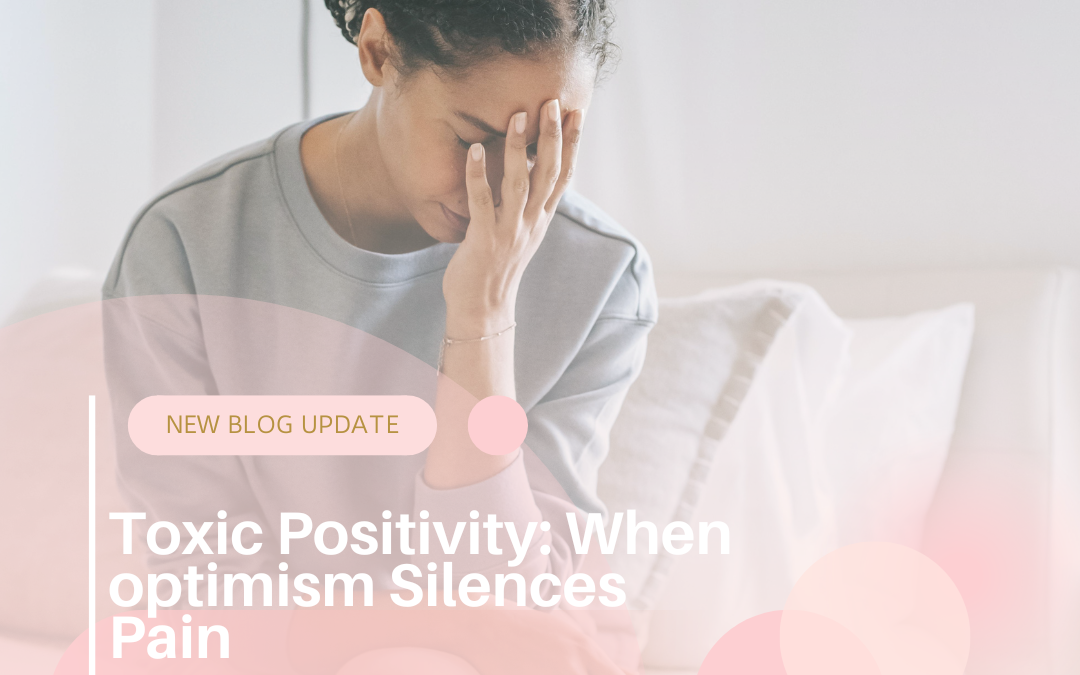We’ve all seen it — pastel-colored Instagram posts that say things like “good vibes only,” “choose happiness,” or “just be grateful.” At first glance, these messages seem harmless, even encouraging. But dig a little deeper, and you’ll find a growing trend that, while well-intentioned, can actually harm our mental and emotional well-being.
Welcome to the world of toxic positivity — where only cheerful emotions are allowed, and anything uncomfortable gets pushed aside.
What Is Toxic Positivity?
Toxic positivity is the belief that no matter how bad things get, you should only focus on the positive. It sounds like:
-
“Everything happens for a reason.”
-
“At least it’s not worse.”
-
“Just stay positive!”
-
“Don’t be so negative.”
While positivity in itself isn’t bad, the toxic part comes from ignoring, invalidating, or shaming real emotions like sadness, fear, anger, or grief. It creates the illusion that those feelings are “wrong” or “weak” — when in fact, they’re part of being human.
How It Shows Up
Toxic positivity can sneak into every area of life:
-
In friendships: You confide in someone, and they respond with, “You’re too blessed to be stressed!”
-
In workplaces: You’re burned out but told to “keep grinding” with a smile.
-
In therapy spaces: You open up about trauma and hear, “Let’s focus on the silver lining.”
-
In social media: Everyone seems to be thriving, posting affirmations while you’re silently struggling.
Over time, this culture teaches people to silence their pain, wear a mask, and pretend they’re okay — even when they’re not.
The Mental Health Impact
Suppressing negative emotions doesn’t make them disappear. It stores them — in the body, in the mind, and in the nervous system. And the more we push them down, the more they build up as:
-
Anxiety and restlessness
-
Depression masked by smiles
-
Shame for having “bad” emotions
-
Emotional disconnection from self and others
Toxic positivity can also make people feel unsafe being honest — afraid that expressing real feelings will be judged, brushed off, or met with discomfort.
Why All Emotions Matter
True mental wellness doesn’t come from avoiding pain — it comes from being able to feel it, name it, and move through it safely.
Grief teaches us how to love deeply.
Anger tells us when something is unfair.
Sadness shows us what we care about.
Fear keeps us aware and alert.
These emotions aren’t the problem. The problem is when we treat them like they don’t belong.
What to Say Instead
If someone opens up to you — or if you’re the one struggling — here are some validating things to say that honor the full emotional spectrum:
-
“That sounds really hard. I’m here with you.”
-
“It makes sense that you feel that way.”
-
“You don’t have to fix it — just feel it.”
-
“Take your time. You’re allowed to feel this.”
These responses don’t dismiss pain — they hold space for it.
Final Thoughts
Positivity can be a beautiful thing. But only when it’s rooted in truth. We don’t need only good vibes — we need real vibes.
The kind that allow us to be honest, to cry when we need to, to rage if necessary, and to rest when we’re tired of pretending.
Mental health isn’t about staying upbeat all the time. It’s about being fully human — and knowing that all of you is welcome.


Recent Comments